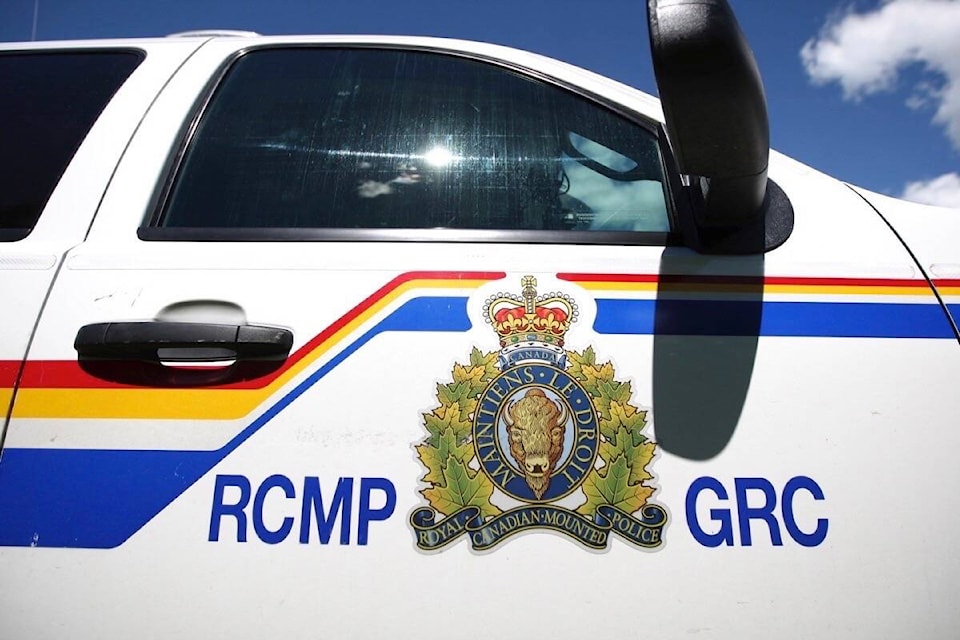The RCMP is offering tips on how motorists can reduce the chances of wildlife collisions.
First off, watch for the road signs.
A Wildlife Warning Sign is a yellow diamond-shaped sign.
The sign warns of a hazard ahead, and advises drivers to be cautious, according to a release.
The sign does not require drivers to slow down to a particular speed unless there is an adjacent speed limit sign posted as well.
The Ministry of Transportation and Infrastructure collects and interprets data on collision locations and places signs in areas of frequent wildlife use or high collision risk locations.
Drivers must obey wildlife warning signs and any associated speed changes.
The signs are located in high wildlife use areas. Drivers must not disregard the signs even if they have been seen many times before. Driver complacency is dangerous.
Speed is one of the most common factors in vehicle collisions because speed:
• Reduces the driver’s ability to steer away from objects in the roadway.
• Extends the distance required to stop.
• Increases the force of impact in the event of a collision.
With good road conditions, drivers tend to increase their speed. Some studies suggest that wildlife vehicle collisions occur more than expected on clear nights, on dry road conditions, and on long straight stretches.
Drivers may tend to be more cautious on curves or in poor weather.
By maintaining the posted speed, drivers can compensate for increased risk.
Think “What If…?”
• Mental preparation is a useful tool. Think about and predict what you might do if an animal suddenly darted out in front of you or ran towards your vehicle.
• It is better to think about and learn how to avoid an encounter with wildlife than have to react to a dangerous situation when you are unprepared.
Drive defensively
Drivers and passengers should actively watch for wildlife - on the road, in the ditch, on the shoulder, and in the right of way. They should also watch for movement on or alongside the road and shining eyes, which will be your head lights reflecting off the animal’s eyes.
NOTE: Moose are so tall that their eyes are normally above the beams of most vehicle headlights, and so are less likely to reflect the light
Drivers also need to watch for flickering headlights of oncoming cars or tail lights of the vehicles in front of you - which may be an animal crossing the road.
It’s important to watch for roadside reflectors that disappear/reappear which might indicate an animal crossing in front of them. Also, watch out between dusk and dawn. Light levels are low, and animals are active.
There is evidence that animals that approach from the right side are avoided more successfully than animals that approach from the left.
Drivers’ headlights illuminate that portion of the road better, and drivers pay close attention to the right-hand side of the road and the ditch - so remember to pay equal attention to both the right and left-hand sides of the road.
Think about the landscape that you are driving through.
Is it good habitat for wildlife? Studies show that problem locations are where creeks intersect roads, areas where there is good roadside habitat nearby, and long straight stretches (because people tend to speed up).
Steer clear - to swerve or not to swerve?
If smaller animals such as deer are in your way - think carefully. Is it safe to swerve?
Do not take unsafe evasive actions.
Serious accidents can occur when drivers lose control of their vehicles trying to avoid an animal. Always reduce your speed in signed areas. Driving at a slower speed may mean it is not necessary to swerve at all.
Swerving can take you into the path of an oncoming vehicle or into the ditch. If a deer is in your way, consider using your brakes, not your wheel. If you have to choose between swerving or striking a moose, consider swerving.
A collision with a moose, which can weigh up to 500 kg (1,200 lbs), carries a significant risk of injury or death to motorists and passengers.
If a crash with a moose is inevitable, crouch as low as possible in your seat, or under the dash, as a moose’s body usually ends up crushing the roof of a car completely flat.
